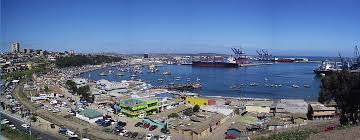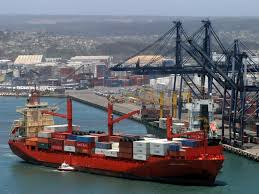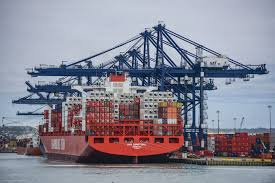How is traffic managed around the Port of San Antonio?

How is traffic managed around the Port of San Antonio?
How is traffic managed around the Port of San Antonio? Traffic management around the Port of San Antonio is crucial for maintaining efficient operations and ensuring the smooth flow of goods.
With the port being a major hub for maritime trade, effective traffic control helps prevent congestion and delays.
Here’s an overview of how traffic is managed around the Port of San Antonio.
Road Infrastructure
The port is connected to a network of well-maintained roads that facilitate access for trucks and vehicles.
Major highways and local roads lead directly to the port, enabling efficient cargo transport.
Regular assessments and upgrades of road infrastructure are essential to accommodate heavy traffic loads.
Improving road conditions helps reduce delays and enhances overall logistics efficiency.

Traffic Control Measures
To manage traffic effectively, the Port of San Antonio employs various control measures.
Traffic signals, signs, and lane markings are strategically placed to guide vehicles.
Dedicated lanes for cargo trucks help streamline the flow of heavy vehicles.
By minimizing conflicts between different types of traffic, safety and efficiency are prioritized.
Monitoring and Surveillance
Advanced monitoring systems are utilized to keep track of traffic patterns around the port.
CCTV cameras and sensors provide real-time data on vehicle movement and congestion levels.
This information allows port authorities to respond quickly to any issues that arise.
Effective monitoring contributes to proactive traffic management and minimizes disruptions.
Scheduling and Coordination
Effective scheduling of vessel arrivals and departures is critical for managing port traffic.
Coordinating with shipping companies helps optimize the timing of cargo operations.
By staggering truck arrivals based on vessel schedules, congestion can be significantly reduced.
This careful planning ensures that the port operates smoothly and efficiently.
Communication with Stakeholders
Clear communication with stakeholders, including shipping companies and logistics providers, is vital.
Regular updates on traffic conditions, port operations, and potential delays are shared.
Stakeholders are encouraged to provide feedback to improve traffic management strategies.
Open lines of communication foster collaboration and enhance overall operational efficiency.
Use of Technology
The Port of San Antonio is leveraging technology to enhance traffic management.
Digital platforms and mobile applications provide real-time updates on traffic conditions and schedules.
These tools help drivers plan their routes and avoid congested areas.
Technology not only improves efficiency but also enhances transparency in operations.
Environmental Considerations
Traffic management strategies also take environmental factors into account.
Efforts to reduce emissions from idling trucks and optimize transport routes are prioritized.
Promoting sustainable transport practices helps mitigate the environmental impact of port activities.
Balancing operational efficiency with environmental responsibility is key for the port’s future.
Training and Awareness Programs
Training programs for port personnel and drivers help raise awareness about traffic management.
Educating stakeholders on safe driving practices and port regulations promotes compliance.
Regular workshops and seminars can keep everyone informed about changes in procedures.
Building a culture of safety and responsibility enhances traffic management efforts.
The Port of San Antonio
Traffic management around the Port of San Antonio is a multifaceted approach aimed at ensuring efficiency and safety.
With well-maintained infrastructure, effective monitoring, and stakeholder coordination, the port navigates the challenges of heavy traffic.
By leveraging technology and promoting sustainable practices, the port enhances its operational capabilities.
Through ongoing improvements, the Port of San Antonio continues to play a vital role in regional trade!





Leave a Reply